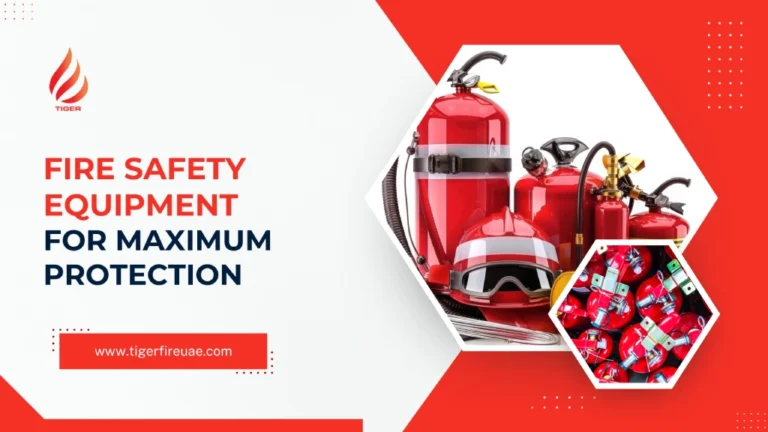Introduction
Ensuring that your fire safety equipment is in optimal condition is crucial for protecting lives and property. Regular maintenance not only ensures compliance with local regulations but also guarantees that your systems function effectively during emergencies. In this comprehensive guide, we’ll explore best practices for maintaining fire safety equipment, focusing on compliance, performance, and longevity.
Why Regular Maintenance Matters
Regular maintenance of fire safety equipment is essential for several reasons:
- Compliance: Adhering to local regulations and standards.
- Reliability: Ensuring equipment functions correctly during emergencies.
- Cost-effectiveness: Preventing costly repairs and replacements.
- Safety: Protecting lives and property by minimizing risks.
Neglecting maintenance can lead to equipment failure, legal penalties, and increased insurance premiums.
Key Fire Safety Equipment and Maintenance Tips
Different types of fire safety equipment require specific maintenance procedures:
Fire Extinguishers
- Inspection: Check pressure gauges, seals, and nozzles monthly.
- Servicing: Conduct professional servicing annually.
- Replacement: Replace extinguishers every 5-12 years, depending on type.
Fire Alarms
- Testing: Test alarms monthly to ensure they emit sound.
- Battery Replacement: Replace batteries every 6 months.
- Professional Inspection: Have a certified technician inspect the system annually.
Fire Suppression Systems
- Inspection: Check for leaks and corrosion monthly.
- Servicing: Schedule professional servicing every 6 months.
- Component Replacement: Replace components as per manufacturer recommendations.
Emergency Lighting
- Testing: Test lights monthly to ensure they illuminate.
- Battery Replacement: Replace batteries every 6 months.
- Cleaning: Clean lenses and fixtures quarterly.
Fire Doors
- Inspection: Check for proper closing and sealing monthly.
- Maintenance: Lubricate hinges and locks quarterly.
- Compliance: Ensure doors meet fire rating standards.
Best Practices for Maintaining Fire Safety Equipment
To ensure optimal performance, follow these best practices:
- Develop a Maintenance Schedule: Create a calendar for regular inspections and servicing.
- Keep Records: Maintain detailed logs of inspections, servicing, and replacements.
- Train Staff: Educate employees on the importance of fire safety and equipment maintenance.
- Use Certified Professionals: Hire qualified technicians for servicing and inspections.
- Stay Informed: Keep up-to-date with local fire safety regulations and standards.
Common Mistakes to Avoid
Avoid these common maintenance mistakes:
- Ignoring Manufacturer Guidelines: Always follow the manufacturer’s instructions for maintenance.
- Delaying Servicing: Postponing servicing can lead to equipment failure.
- Using Unqualified Personnel: Only allow certified professionals to service equipment.
- Overlooking Documentation: Failing to keep records can lead to compliance issues.
Sector-Specific Considerations
Different sectors have unique fire safety requirements:
Commercial Buildings
- Regular Inspections: Conduct monthly inspections of all fire safety equipment.
- Employee Training: Provide regular fire safety training sessions for employees.
- Emergency Drills: Organize quarterly fire drills to ensure preparedness.
Residential Buildings
- Smoke Detectors: Install smoke detectors in all sleeping areas and hallways.
- Fire Extinguishers: Place fire extinguishers in accessible locations.
- Evacuation Plans: Develop and communicate evacuation plans to all residents.
Industrial Facilities
- Specialized Equipment: Ensure that fire suppression systems are tailored to the specific hazards present.
- Regular Maintenance: Schedule monthly inspections and servicing of all equipment.
- Compliance: Adhere to industry-specific fire safety regulations and standards.
The Role of Technology in Maintenance
Leveraging technology can streamline fire safety equipment maintenance:
- Maintenance Management Software: Use software to schedule inspections, track servicing, and maintain records.
- IoT Sensors: Implement sensors to monitor equipment status in real-time.
- Automated Alerts: Set up alerts for upcoming inspections and servicing.
By integrating technology, organizations can enhance efficiency and ensure compliance.
Conclusion
Maintaining fire safety equipment is not just a regulatory requirement; it’s a critical component of your safety strategy. By following best practices and avoiding common mistakes, you can ensure that your equipment performs optimally when needed most. Regular maintenance not only protects lives and property but also demonstrates a commitment to safety and compliance.

